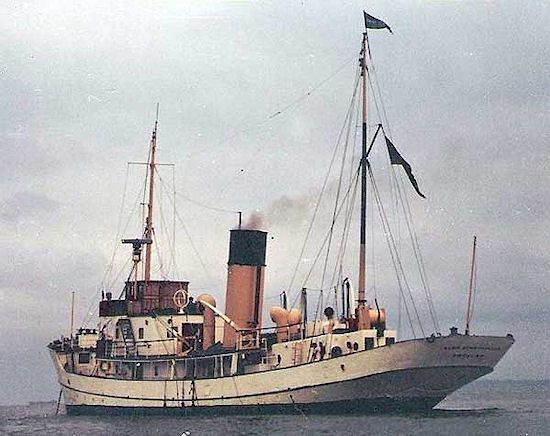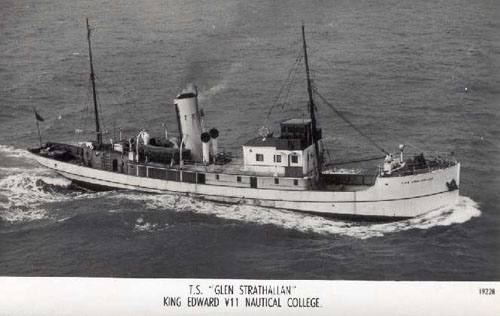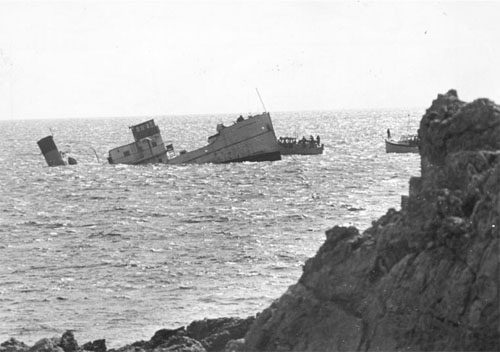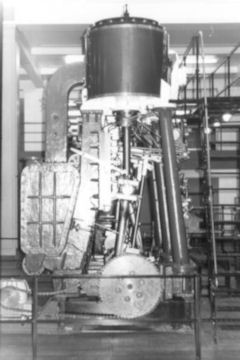The Glen Strathallan
Visiting the Science Museum in London I came upon a familiar looking triple expansion engine. Having discovered that the engine was from the T.S. Glen Strathallan, the familiararity was explained. As part of my engineering cadetship I had spent several days steaming around the Thames estuary learning the trade. I can remember using a Dobbie McInnes engine indicator and having great fun trying to hook the cord to some part of the moving valve gear. The following information courtesy of Submerged Productions (see link right).
Most ships get wrecked in tragic or unfortunate circumstances. Often they sink in mountainous seas, or get pounded to pieces on some treacherous shore during a howling gale. The sinking of the Glen Strathallan however, couldn't be more different, as she was deliberately sunk during a flat calm, to honour the wishes of her dead owner.

In 1928 the shipbuilding firm of Cochrance and Sons of Selby, Yorkshire, won a contract to build a steam trawler of 690 tons displacement. She was to be 150 feet long by 24 feet beam, have a speed of ten knots, and generally be one of the most modern and efficient vessels of her day. Unfortunately before she was finished, the firm that had ordered her went bankrupt and for a while things looked pretty bleak. However the millionaire Colby Cubbin, who knew a bargain when he saw it, snapped up the unfinished vessel, had her converted to a pleasure yacht, and gave her the name Glen Strathallan.

At the outbreak of the Second World War, the Glen Strathallan was lent to the Royal Navy and refitted as an escort vessel, a duty she carried out for nearly four years. When the War was over, Colby Cubbin got his yacht returned to him, and he used it extensively for cruising between the Isle of Man and Scotland. He must have become very fond of her, because when he unexpectedly died his Will revealed that he wished the Glen Strathallan to be used as a floating school room. But he also stipulated that if no useful employment could be found for his ship, she was to be taken out to sea and sunk.
For years the Glen Strathallan was used as a training ship for future officers of the Merchant Navy, but finally her age and escalating costs made her an uneconomic proposition. Faithful to the wishes of the late owner, the trustees decided to sink her in the Hurd Deep, way out in the English Channel. Plymouth Ocean Projects of Fort Bovisand got wind of the project, and appealed to the trustees to sink the ship near the entrance to Plymouth Sound instead. Here they said the ship could be used as an underwater classroom and so still be of some educational value. This scheme was agreed to, and after removing the engine to the Science Museum, her seacocks were removed, and on 27 April 1970 the Glen Strathallan gently slipped beneath the waves about 200 yards from the Shagstone.

A lot of good ideas often go wrong through lack of foresight and this was to be the case with the Glen Strathallan. Sinking where she did became something of a hazard to the many fishing boats returning to Plymouth, and in the end Trinity House placed a buoy on the wrecksite.
However a wrangle blew up about who was responsible for paying for the maintenance of the buoy, and in the end Fort Bovisand was ordered to render the wreck safe to navigation. In due course the Glen Strathallan was dispersed and its value as an underwater classroom destroyed. A great pity, and something I am sure that Colby Cubbin would not have approved of. The wreck now lies under fifty feet of water on a sandy bottom strewn with large rocky outcrops.
